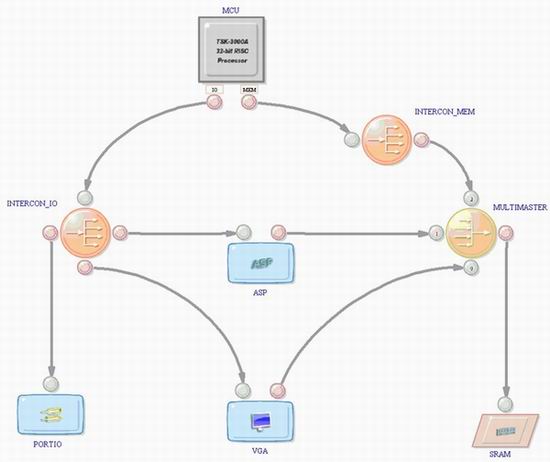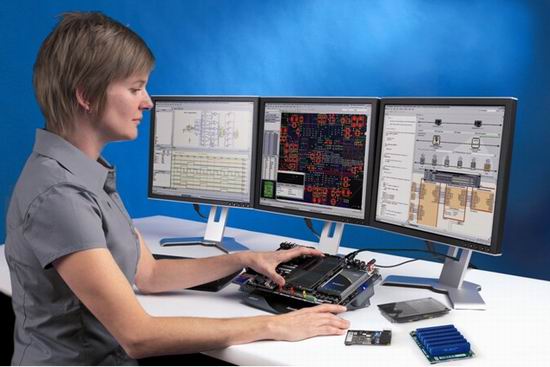In terms of its nature and history, the development of the electronic design industry is closely related to the progress of semiconductor device technology. With every advancement of technology on the basis of inheritance, when the potential of new device technology is fully developed, there will be real progress and innovation in product design. When some innovative engineering ideas touch the design tools, which not only provide new methods for using these technologies, but also can be designed in an unconstrained and easy-to-understand manner, this progress will occur.
Low-cost microprocessors were originally designed and conceived as a more efficient method of producing pocket calculators. As a result, its appearance has reflected the possibility of using software coding to enhance and increase product functionality. However, it is the innovative applications of new devices that use higher-level language tools because they allow the use of soft-design-centric approaches to design and achieve technological innovations. By exploring all design possibilities, engineers can transfer most of their hardware logic to changeable software domains. The full use of tools and technologies by engineering staff has prompted the functional “intelligence†that defines the value of products to begin to shift to the software domain.
At present, the emergence of low-cost, programmable high-intelligent devices such as FPGAs has brought another technological innovation to our design approach. These smart designs not only involve software in the traditional sense, but also include "soft" hardware implemented in an FPGA. Don't just use this technology as a glue logic reservoir as its basic potential, so that the unique features of the product and the resulting competitive advantages of the market can be defined in the modifiable software domain.
Designers of embedded systems now have a completely new design platform that can be used to create innovative products. When implementing a "soft" design approach using a fully configurable design platform, FPGAs bring unprecedented design freedom, thanks in part to a large number of available IP cores including logic blocks, peripherals and microprocessors . These can all be changed in accordance with the development of design requirements. Some key design decisions can be made later in the design cycle, while the hardware and software of the product can be updated in real time.
When the technology potential is fully utilized, the inherent "soft" design approach brings new freedom to the product development process. The desire to use this technology to create a product with true market differentiation means to overcome the many implementation issues that arise in the use of the technology. And this successful implementation is undoubtedly closely related to the innovation of the design tools we use.
Limitations introduced
In the traditional design flow, the design possibilities brought about by programmable devices are always accompanied by the increasing complexity of the entire product development process. A new level (or a new "realm") that has been introduced into the product development tool chain has traditionally been based on an embedded hardware development toolset that is independent of existing design processes and existing tools. The design process is irrelevant. When an independent FPGA-based component is integrated with the entire product design, this not only brings with it high complexity, but also requires you to master a new set of design skills to take full advantage of these embedded development tools.
The main reason for these challenges lies in the traditional series of IDE tools (integrated development environments) that originated in the ASIC design field, which uses HDL (hardware description language) to describe the hardware design of the pre-production chip. Using a traditional IDE tool chain means designing in a separate design environment and becoming an HDL expert while applying knowledge of these target FPGA infrastructures.
The most common situation is that the IDE is a tool chain owned by the FPGA device manufacturer. They are developed to support each vendor's products and promote sales, and naturally there is no support for competitive products. The use of a vendor IDE limits the inherent flexibility and freedom of embedded hardware design due to the limitations of the FPGA device's scope, the vendor's IP core, and the design methods you can use. In addition, if you want to change the programmable device used in your design, you'll have no alternative.
In practice, the limitations of the development tools themselves compromise the design choices that can be used in the pursuit of innovation.
Vendor-neutral design
To fully exploit the design possibilities of today's embedded design processes, you need a programmable device development environment that allows you to easily select multiple devices from different vendors. Creating a design environment completely independent of the vendor and the device opens the door to all the possibilities of the target, allowing the embedded developer to choose the best device for the current design.
Such a system is inherently neutral in an embedded design, allowing changes to the target device without compromising the validity of the design source file. In this way, you can make changes to the target device according to your own ideas, and make final decisions later in the design process when you can better understand the required specifications. The embedded design flow can be performed while all devices are still selected, without having to develop the hardware before the important embedded design begins.
A vendor-independent design system can also provide a broader range of IP cores because it enables you to achieve compatibility with the cores provided by the target vendor by making simple changes to the target device (such as a specific high-performance microprocessor). If you use the device-neutral framework in your system to develop an IP core library, the resulting hardware and software modules will show the same neutrality as the system. This brings to the eye-catching development prospect of using a neutral 32-bit microprocessor core in the initial development, and then changing the IP module to vendor-provided, with minimal impact on the completed design. The kernel.
The success of this approach depends in part on the availability of system upgrades that can be added with new device hardware support. You are free to use the latest programmable devices for your design with full system library IP core compatibility. At the same time, they also support the latest "soft" and discrete microprocessors and those embedded in the FPGA architecture because the system's embedded software tool chain has also been upgraded.
Designing in a truly vendor-neutral product development environment gives designers the freedom to easily explore all design possibilities. As the design progresses, we can fully choose to use programmable devices, microprocessors, and IP cores to create the most competitive products without any compromises.
Abstract transparency
The limitations of the traditional embedded design flow for device and IP range, and the mystery of HDL-based design capture (compared with assembly language for complex procedures) all require expert skills, and engineers cannot focus on innovative designs.
What is needed here is a system that enhances the abstraction of the design process so that design engineers can use and extend existing design skills, as well as design at a higher level. The potential benefit of high-level embedded design approaches is that hardware or software engineers can simply connect pre-verified IP blocks together in a way that is not only easy to achieve but also hides the underlying complexity of the device architecture.
By providing a schematic or diagram-based design interface, the embedded design process is improved without the need for expert HDL skills (though HDL inputs can be included). When such a system exists as a vendor-neutral embedded design environment, the process of replacing processors, peripheral devices, and memory may become a simple module-level operation through a graphical interface.
The main advantage of this system is that designers can fully focus on product development itself - functional "soft" intelligence. The high level of interface selection makes it easy to capture design intent without any complexity or other distracting interference.
When integrated into a system that natively supports common high-level design paradigms, the underlying hardware complexity is effectively hidden. Embedded hardware abstractions can include advanced IP interface systems (eg, Y-bus) and hardware interface IP cores that introduce transparent interconnect layers around processors, peripheral devices, and memory. By using a low-level interface architecture that supports reduced-complexity design interfaces, the embedded design actually becomes a “point by point†test.
Freedom through integration
Jumping out of traditional IDE-based design flows can provide engineers with valuable options based on existing options and provide innovative ways to create embedded designs. Manufacturers and device-independent embedded hardware design systems bring this all together and provide a high level of design abstraction. However, how the system connects with other parts of the design environment is also worth paying attention to.
In order to be fully effective, design abstraction and open device selection need to be reflected throughout the product development chain. In this way, the complex process brought by placing all design elements (hardware, software and programmable hardware) together in the traditional design becomes simple and transparent.
The integrated design system achieves this effect by placing all design domains in a single, consistent application. The design model becomes a single entity that runs through all domains, for example allowing the library IP module to contain multiple device support, graphics models, and hardware interface layers. Changes in the embedded design can be passed directly to the relevant domain using advanced automatic processes such as FPGA pin optimization. This becomes possible because all parts of the design process share the same single model of design data.
Applying an integrated vendor-independent design environment to the next phase of its logic means that those attributes are to be included in a joint hardware development platform. Hardware platforms that are vendor- and device-independent (possibly via plug-in FPGA board systems) and communicate directly with integrated applications can reflect the required flexibility and open design choices into the real world. Design iterations that require improvement and debugging of design projects can occur in real-time in real hardware, but also reduce the need for design simulation.
When this type of reconfigurable hardware platform is unified with the entire design system, from design capture to physical hardware, device and IP design choices made can be transparent throughout the entire design chain. In this way, the entire product development system becomes unified and coherent.
If the design environment also provides a high level of design abstraction, system developers will not be limited by the choice of devices and methods used to capture design intent. The ultimate result is an open approach to embedded system development that frees designers to focus on the design itself—creating functional device intelligence that provides true product differentiation.

Figure 1: An advanced design capture system that automatically handles the underlying hardware complexity allows designers to focus on innovation.

Figure 2: In addition to the traditional HDL entry, suitable development tools can use the schematic-based capture or icon-based continuity control to abstract the embedded design to a higher level.

Figure 3: In an ideal design environment, all design systems, including hardware development platforms, can be unified within a single vendor-neutral product development system.

Figure 4: A design system that does not depend on FPGA devices and can provide an advanced design abstraction can provide all the options needed to create a competitive product without making any compromises.
Shenzhen CGE Electronics Co.,Ltd , https://www.cgeconnector.com